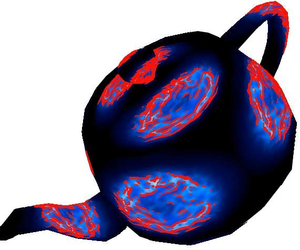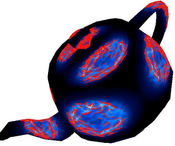Information
- Publication Type: Master Thesis
- Workgroup(s)/Project(s):
- Date: April 2002
- TU Wien Library:
- Note: 1
- First Supervisor: Eduard Gröller
Abstract
Two of the most important issues of computer graphics – especially in raster graphics and volume visualisation – are sampling and reconstruction. These operations must fulfill particular conditions of sampling theory in order to be able to represent arbitrary continuous functions by discrete samples and reconstruct them from these samples without significant information loss. Several approaches for high-quality reconstruction have been introduced to the computer graphics community. These approaches are mostly implemented in software, possible only as pre-process step. The only two ways of reconstruction that are usually fast enough for real-time rendering are nearest neighbor and linear interpolation filtering, but the quality of these filtering processes is often not sufficient. This work summarizes the hardware-based methods that exploit the features of today’s graphics chips for filtering tasks. These methods are divided in two parts, i.e., high-resolution filtering and image processing. Both methods are based on the distribution principle of convolution known from splatting based volume rendering algorithms and they share the same general principle. The difference is in the implementation of the algorithms themselves. High-resolution filtering employs high-order filters in order to improve the quality of resampling tremendously. The implemented algorithms exploit symmetry or separability properties to make the filtering more efficient. We compare it to the existing, natively supported solution, i.e., linear interpolation to our filtering implementation using higher order filters. This is shown in various application areas like surface-texturing, and solid-texturing, animated textures, or derivative filtering; at interactive framerates. The image processing algorithms are simplified general filtering algorithms to increase effciency and performance. We show the usability on smoothing and edge detection, the important operations of image processing and pattern recognition. We combine this techniques together with other hardware features to provide hardware-accelerated artistic rendering techniques. These are also presented in a rendering system that provides non-photorealistic rendering effects.Additional Files and Images
Weblinks
No further information available.BibTeX
@mastersthesis{Masterthesis-Viola,
title = "Applications of Hardware-Accelerated Filtering in Computer
Graphics",
author = "Ivan Viola",
year = "2002",
abstract = "Two of the most important issues of computer graphics –
especially in raster graphics and volume visualisation –
are sampling and reconstruction. These operations must
fulfill particular conditions of sampling theory in order to
be able to represent arbitrary continuous functions by
discrete samples and reconstruct them from these samples
without significant information loss. Several approaches for
high-quality reconstruction have been introduced to the
computer graphics community. These approaches are mostly
implemented in software, possible only as pre-process step.
The only two ways of reconstruction that are usually fast
enough for real-time rendering are nearest neighbor and
linear interpolation filtering, but the quality of these
filtering processes is often not sufficient. This work
summarizes the hardware-based methods that exploit the
features of today’s graphics chips for filtering tasks.
These methods are divided in two parts, i.e.,
high-resolution filtering and image processing. Both methods
are based on the distribution principle of convolution known
from splatting based volume rendering algorithms and they
share the same general principle. The difference is in the
implementation of the algorithms themselves. High-resolution
filtering employs high-order filters in order to improve the
quality of resampling tremendously. The implemented
algorithms exploit symmetry or separability properties to
make the filtering more efficient. We compare it to the
existing, natively supported solution, i.e., linear
interpolation to our filtering implementation using higher
order filters. This is shown in various application areas
like surface-texturing, and solid-texturing, animated
textures, or derivative filtering; at interactive
framerates. The image processing algorithms are simplified
general filtering algorithms to increase effciency and
performance. We show the usability on smoothing and edge
detection, the important operations of image processing and
pattern recognition. We combine this techniques together
with other hardware features to provide hardware-accelerated
artistic rendering techniques. These are also presented in a
rendering system that provides non-photorealistic rendering
effects.",
month = apr,
note = "1",
address = "Favoritenstrasse 9-11/E193-02, A-1040 Vienna, Austria",
school = "Institute of Computer Graphics and Algorithms, Vienna
University of Technology ",
URL = "https://www.cg.tuwien.ac.at/research/publications/2002/Masterthesis-Viola/",
}


 Thesis
Thesis
